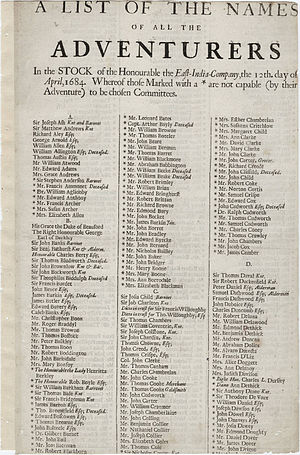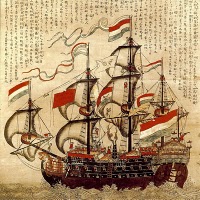
The East India Company, often referred to as the Honourable East India Company or more colloquially as “John Company”, was established with a Royal Charter from Elizabeth I on December 31, 1600. The Company was originally chartered as the Governor and Company of Merchants of London trading into the East Indies, with the intention of pursuing trade throughout the East Indies. As it turned out, however, the Company ended up trading primarily with the Indian subcontinent, Balochistan, and the North-west frontier provinces.
The Company was created by a group of influential businessmen who gained government permission to monopolize trade in the East Indies for a period of 15 years. Thus, the British Raj was established, and fortunes were made dealing in ivory, silk, cotton, and spices.
Interestingly, however, English traders never looked at India as a permanent home. East India Company merchants went to India to establish trade and to rule. While few EIC employees stayed permanently, British rule over India lasted nearly 200 years.
As the British EIC moved into the territory, they had to face a certain amount of foreign competition. The Dutch East India Company in particular had a tight hold on the Spice Islands; thus, the British EIC focused its attentions on the Indian mainland. The first trading station was established in 1613, and by 1647, the Company had 23 factories and 90 employees throughout the subcontinent.
The Company built forts throughout India and established its own private army comprised of both British officers and native soldiers. Through this martial rule, it was easy for the Company to collect profits. Lands could be seized, local rulers could easily be deposed, and taxes could be extracted from the general populace.
It took a few decades before the EIC really became profitable; however, once it did, it became a juggernaut, dominating both the business and political spheres. As the Company’s power grew, so did England’s on the global scene.

By 1784, the power of the EIC rivaled that of the British Government, in that it held rule, in effect, over a vast number of British territories. To combat this, the government passed the East India Company Act, separating the Company’s commercial activities from its political functions. Through this act, the EIC was subordinated to the government in regard to all political matters.
The Charter Act of 1813 further subjected the EIC to Crown rule. While the act extended the Company’s charter for another 20 years, it ended the trade monopoly in all products except tea. This event also led to a greater influx of British citizens in India, as the EIC was forced to allow missionaries to establish works in the country – something that had previously been banned.
By 1873, the Company had all but dissolved. Over time, the Crown had absorbed much of the power once held by the EIC. So too, the Company’s army of 24,000 was incorporated into the British army, effectively removing the “muscle” that the Company had once relied on.
The East India Company Stock Redemption Act was passed in 1873, but little remained of its former glory. Power had effectively transferred to the government, and Queen Victoria ruled as Empress of India.













 Tipu Sultan papers reveal wealth of spoils after India siege
Tipu Sultan papers reveal wealth of spoils after India siege